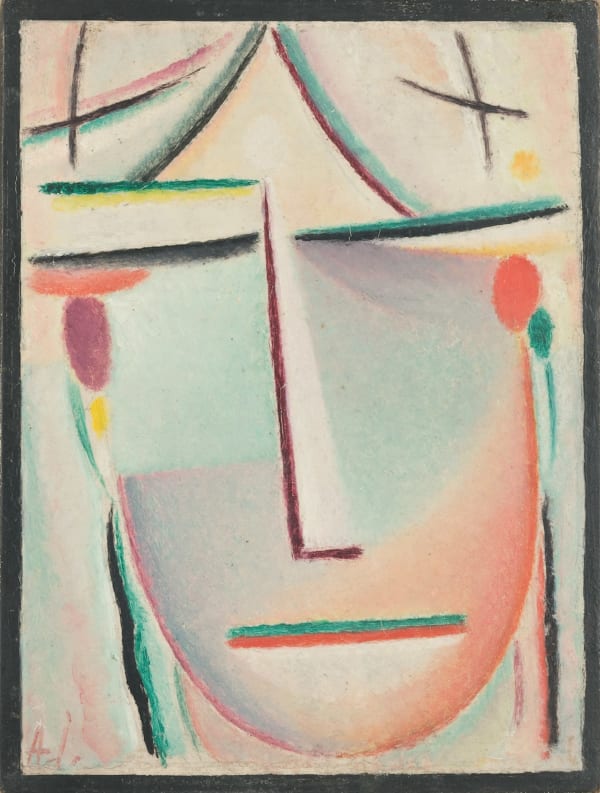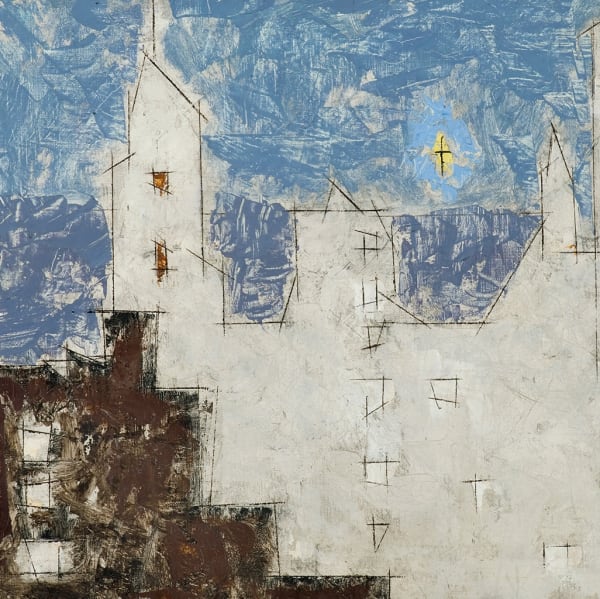ALEXEJ VON JAWLENSKY Russian, 1864-1941
"I understood that the artist must say with his art, through forms and colours, what is divine in him. That is why the work of art is a visible God, and art is a desire to God."
Alexej von Jawlensky was a Russian painter associated with the Der Blauer Reiter group in Munich. His works are characterized by their directional brushstrokes, mystical subjects, and use of rich, contrasting hues. Among Jawlensky’s best-known works are his Meditations, a series of abstract portraits, composed of blocks of color and stylized facial features. “I sat in my studio and painted, and did not need Nature as a prompter,” he once explained. “I only had to immerse myself in myself, pray, and prepare my soul to a state of religious awareness.” Born on March 13, 1864 in Torzhok, Russia, he served in the Tsarist Army as an officer before enrolling in classes of the realist painter Ilya Repin in St. Petersburg. Repin introduced Jawlensky to one his private art students an older woman named Marianne von Werefkin. Werefkin and Jawlensky soon become lovers and moved to Munich, were she postponed her own career in order to support the younger artist. In 1899, Jawlensky met Wassily Kandinksy and transitioned from an accomplished academic painter to an innovative colorist. Over the following decade, he worked alongside Kandsinky, Gabriele Münter, and Werfekin, while living in the Bavarian village of Murnau. Fleeing to Switzerland during World War I, he further established himself in the avant-garde circles of Europe before returning to Germany in 1921. Despite being a German citizen, his works were confiscated by the Nazi regime and shown in the infamous Degenerate Art exhibition in 1937. Jawlensky died on March 15, 1941 in Wiesbaden, Germany. Today, his works are held in the collections of the Art Institute of Chicago, the Hermitage Museum in St. Petersburg, the National Gallery of Art in Washington, D.C., and the Albertina in Vienna, among others
-
 ALEXEJ VON JAWLENSKYKleines Heilandsgesicht, 1921Oil on wood21 x 16 cm
ALEXEJ VON JAWLENSKYKleines Heilandsgesicht, 1921Oil on wood21 x 16 cm
8 1/4 x 6 1/4 in -
 ALEXEJ VON JAWLENSKYHeilandsgesicht, 1922/23Oil on linen textured paper on canvas21,5 x 15,2 cm
ALEXEJ VON JAWLENSKYHeilandsgesicht, 1922/23Oil on linen textured paper on canvas21,5 x 15,2 cm
8 1/4 x 5 7/8 in -
 ALEXEJ VON JAWLENSKYFrauenkopf, 1923Watercolor, gouache and ink on paper32,4 x 25,3 cm
ALEXEJ VON JAWLENSKYFrauenkopf, 1923Watercolor, gouache and ink on paper32,4 x 25,3 cm
12 5/8 x 9 7/8 in






